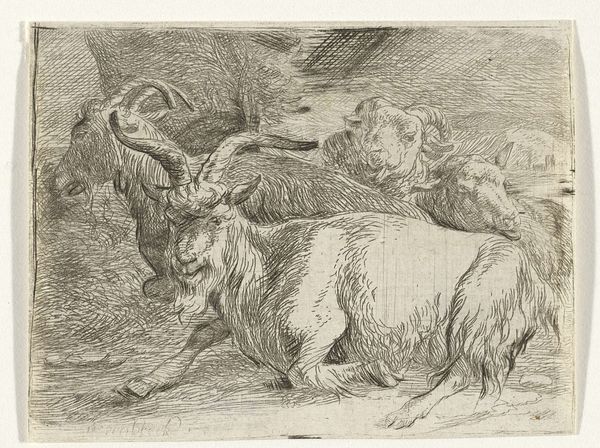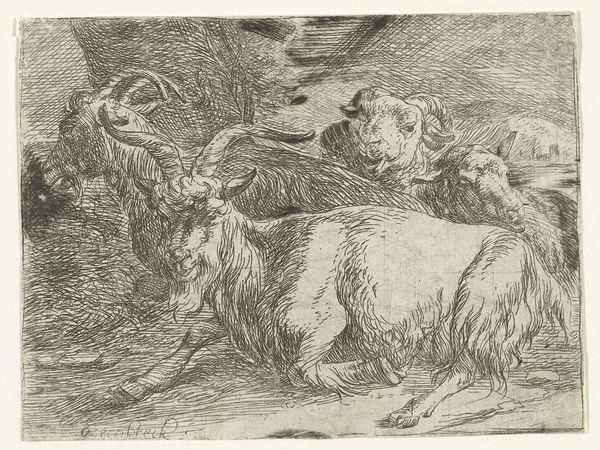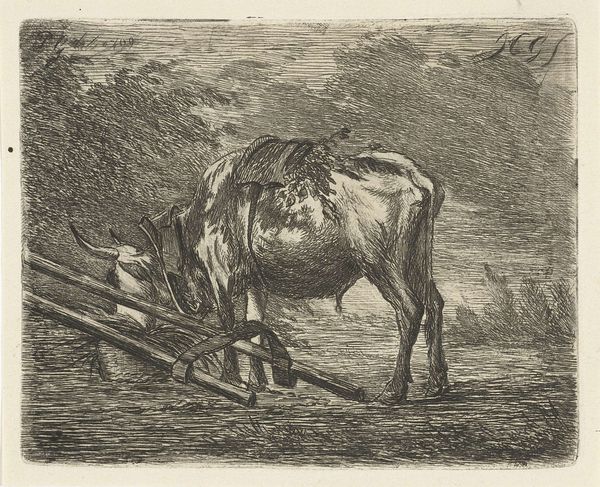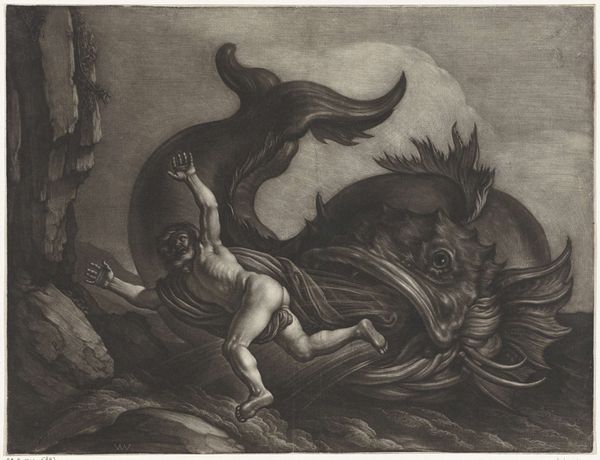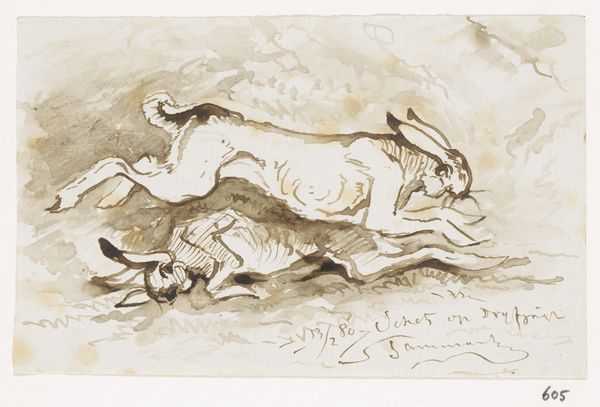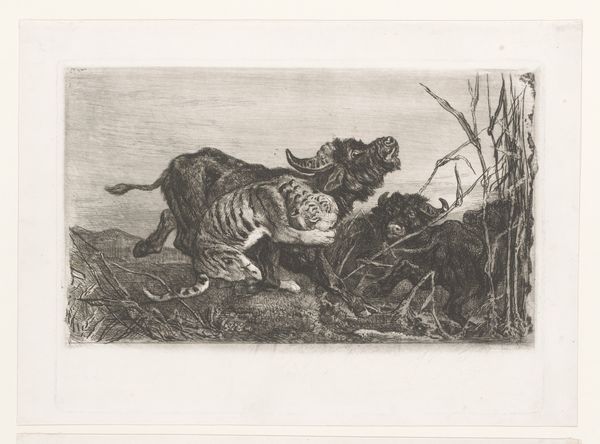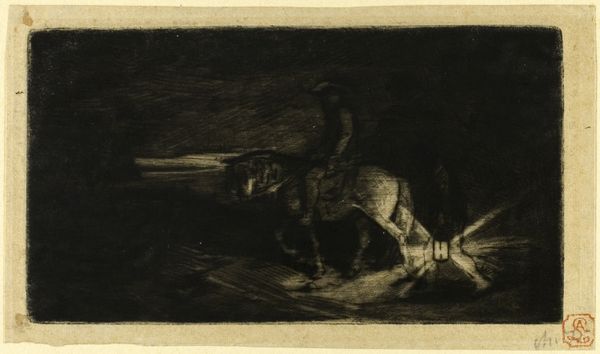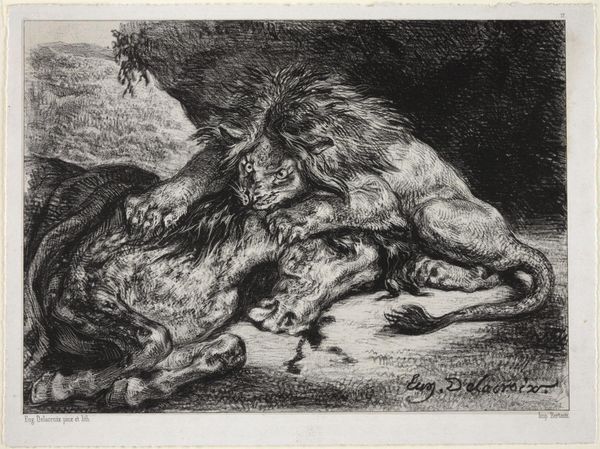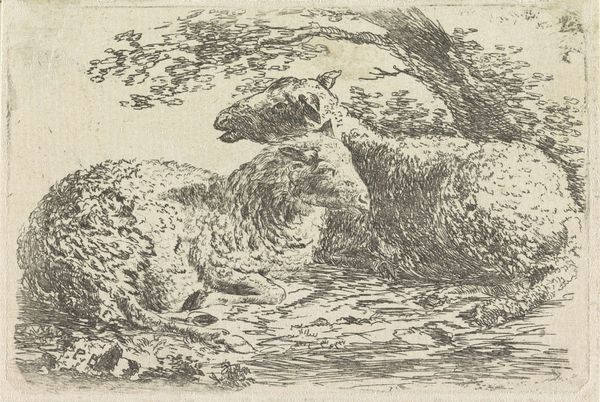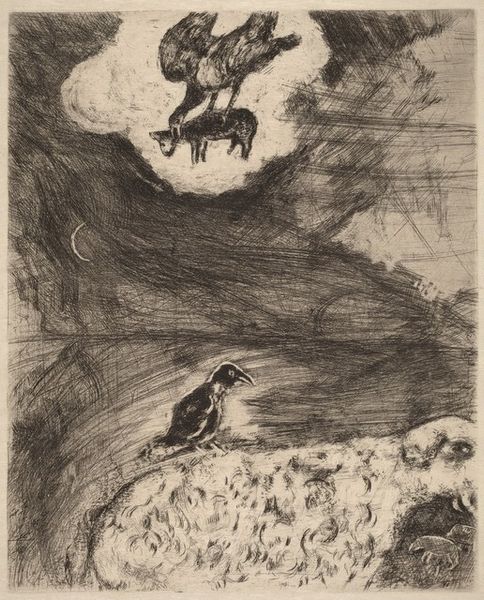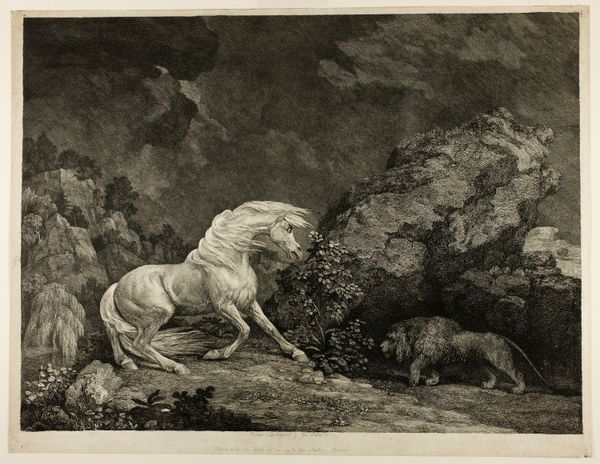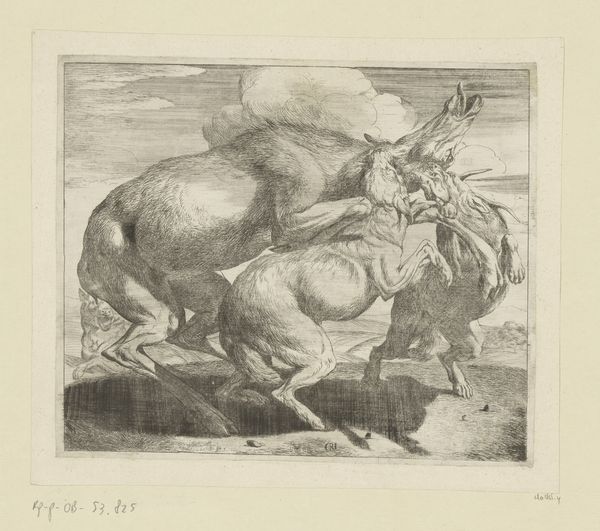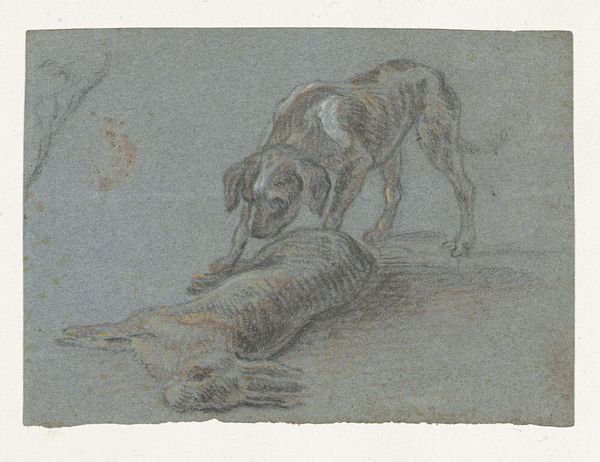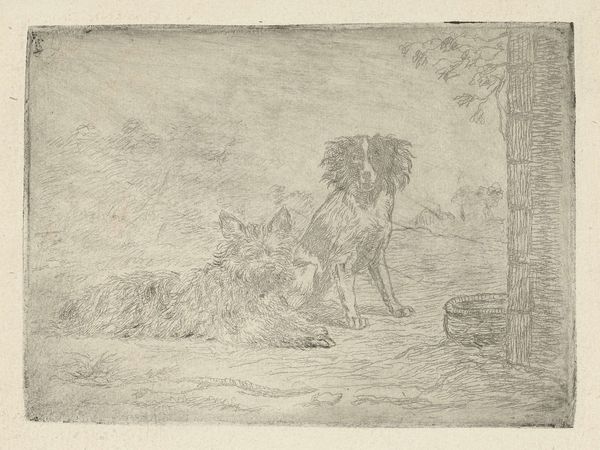
drawing, graphite
#
pencil drawn
#
drawing
#
animal
#
pencil sketch
#
landscape
#
river
#
charcoal drawing
#
charcoal art
#
pencil drawing
#
graphite
#
pencil work
#
graphite
#
realism
Dimensions: height 233 mm, width 350 mm
Copyright: Rijks Museum: Open Domain
Editor: This graphite drawing, "Twee vechtende stieren in een rivierlandschap" from 1848 by Johan Daniël Koelman, feels incredibly charged. There's a real sense of impending violence. How do you interpret this work, considering its historical context? Curator: Well, beyond the immediate impression of animal aggression, I think it’s crucial to unpack what that imagery represented in 19th-century Europe. Aren’t you struck by the way the drawing highlights this struggle for dominance within the animal kingdom? We have to ask ourselves if it mirrors broader social anxieties of the time? Editor: Social anxieties like…? Curator: Like anxieties surrounding class conflict, the rise of industrial capitalism, and even shifting gender roles. Consider how representations of masculine strength, especially animalistic masculinity, often become proxies for discussions about power and control in human society. How do you see that reflected here? Editor: I see what you mean! It’s not *just* about two bulls fighting. The turbulent river landscape seems to heighten that tension. Was there something particular about Dutch society in 1848 that might inform the symbolism? Curator: Absolutely. Think about the revolutionary fervor sweeping across Europe that year. Even though the Netherlands remained relatively stable, there was still significant social unrest. The drawing could be seen as a visual metaphor for that simmering conflict, with the battling bulls representing opposing forces within society. Even their reflection is troubled. How do these anxieties play out for the artist, and by extension, the audience? Editor: So it’s not just a scene, it’s a reflection of the times... a kind of artistic commentary on societal tensions, using nature as a stand-in? Curator: Precisely. By examining these works through an intersectional lens, we gain a deeper appreciation of how art both reflects and shapes the world around us. Editor: That’s given me a totally new way of seeing it; not just animals fighting, but social dynamics in play! Thanks so much!
Comments
No comments
Be the first to comment and join the conversation on the ultimate creative platform.
